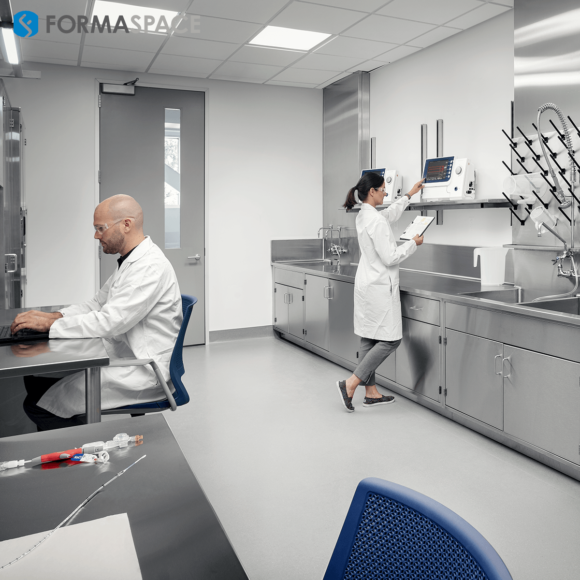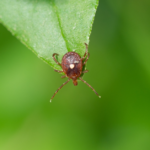IARC/JECFA Classify Aspartame as a Possible Carcinogen Associated with Hepatocellular Carcinoma, a Type of Liver Cancer

On July 15, the United Nations agencies IARC (International Agency for Research on Cancer) and JECFA (Joint FAO/WHO Expert Committee on Food Additives) reached a revised assessment of the health safety of the commonly used artificial sweetener aspartame.
The joint IARC/JECFA press release stated, “The working group classified aspartame as possibly carcinogenic to humans (Group 2B) based on limited evidence for cancer in humans (for hepatocellular carcinoma, a type of liver cancer).”
In this Formaspace laboratory report, we will look at how they came to this conclusion and what it means, as well as some important other new warnings the IARC/JECFA issued for other commonly used food additives.

But first, a little context about artificial sweeteners.
Common Natural Sweeteners: Sucrose (table sugar), Fructose (fruit sugar), and High-Fructose Corn Syrup (HFCS)
Let’s start with the sugar compounds that artificial sweeteners seek to replace. These are simple carbohydrates comprised of either one or two types of sugar (e.g. monosaccharides or disaccharides, respectively).
The first is sucrose (commonly known as table sugar), which is typically refined from plants such as sugar cane or sugar beets. As a disaccharide, sucrose contains one glucose and one fructose molecule.
The second is fructose, often called “fruit sugar,” which is a monosaccharide (e.g. single type of sugar) found in many fruits, honey, agave, and most root vegetables.
The third commonly available sweetener is high-fructose corn syrup or HFCS. It is a disaccharide, typically comprised of about 55% fructose and 45% glucose.
Finally, our fourth sugar is glucose, which is a monosaccharide (e.g. single type of sugar); this is the body’s preferred source of energy (along with fat and protein).
As we digest, sucrose and high-fructose corn syrup are first broken down into their individual components and then metabolized separately. The resulting glucose components can be used by the body right away, but any fructose molecules need to be metabolized first, typically in the liver, where it can also create fat through lipogenesis to store energy.
The body regulates the amount of glucose (commonly referred to as blood sugar) that circulates through the bloodstream through a complex process involving insulin produced in the pancreas. But things can go awry. For example, diabetic patients typically suffer from insulin resistance, preventing them from effectively controlling their blood sugar levels.

In response, people with diabetes typically seek to control their blood sugar levels by consuming foods and beverages with low sugar content and a high-glycemic index (indicative of foods that require more time to digest) and, if needed, supplement this with insulin injections to overcome insulin resistance.
For people with diabetes, commonly used artificial sweeteners are like a “Get Out of Jail Free” card in that they don’t contain sucrose or fructose compounds, thus allowing them to enjoy “sweetened” food and drink products without significantly impacting their blood sugar levels.
Now that we’re caught up on natural simple sugars, let’s look at the surprising history of sugar substitutes.
Saccharine – Discovered by Constantin Fahlberg in 1878
While researching benzoic sulfimide at Johns Hopkins University, Fahlberg licked his finger after work and discovered it had a very sweet taste – about 500 times sweeter than sucrose (table sugar). Fahlberg patented the production methods for this new artificial sweetener under the trade name Saccharine and began production in Germany, introducing the product at the 1893 World’s Fair. According to commodities historian Carolyn de la Pena, writing in the book Empty Pleasures, Saccharine was initially rejected by the public as an “adulterant” used by large manufacturers seeking a cheaper ingredient than sucrose table sugar. However, by the late 1970s, saccharine had become wildly popular as a “diet” sweetener, and when the FDA threatened to ban saccharine (contemporary studies indicated it could cause malignant bladder tumors in laboratory animals), over a million Americans wrote protest letters to Congress and the FDA demanding the ban be overturned, which it was.
Today, Saccharine is marketed under the name Sweet’N Low in the US.
Cyclamate – Discovered by Michael Sveda in 1937

Graduate student Michael Sveda discovered cyclamate when he was researching the synthesis of an antipyretic drug at the University of Illinois. After putting his cigarette down on the lab bench, he picked it up again and discovered it had a sweet taste – Sveda had discovered what became known as cyclamate. When used as an artificial sweetener, cyclamate comes in two related forms, calcium cyclamate and sodium cyclamate, both of which are salts of cyclohexyl sulfamic acid. DuPont bought the patent for cyclamate production in 1940 and later sold it to Abbott Laboratories, who brought it to market in 1950. Cyclamate became an increasingly popular ingredient in diet food and drink products (such as Coca-Cola’s TAB diet drink) as well as the table-top sweetener marketed under the brand name Sucaryl.
However, by the late 1960s, contemporary studies pointed to safety concerns related to its potential carcinogenicity, including the potential of cyclamate to break down into cyclohexylamine (a suspected toxin) in the digestive tract, and a lab study found that the then common 10 parts cyclamate to 1 part saccharine mixture used in diet drinks was associated with an increase in cancerous bladder tumors when fed to lab rats.
The FDA banned the widespread use of cyclamates in 1969, with a total ban coming into force in 1970. However, critics pointed out that the dose administered to lab rats in the study was equivalent to humans drinking over 500 cans of diet soda per day.
Today, only the US and South Korea continue to ban cyclamates. In the US, the product Sweet’N Low switched to saccharine as its main ingredient after the FDA banned cyclamates, while Sweet’N Low sold in Canada continues to use cyclamates.
Aspartame – Discovered by James M. Schlatter in 1965
G.D. Searle & Company chemist James M. Schlatter was in the middle of a multi-step process to create a tetrapeptide of the hormone gastrin to evaluate it as an anti-ulcer drug when he licked his finger to pick up a leaf of paper. At this moment, Schlatter discovered that the intermediate synthesis product, today known as aspartame, was intensely sweet – up to 200 times sweeter than sucrose table sugar.
Aspartame is a dipeptide of phenylalanine and aspartic acid, which functions as an agonist, binding to the TAS1R2 receptors in the mouth to create the taste sensation of sweetness.
Despite aspartame’s sweetness, it’s not a 1 to 1 substitute for sucrose – like many peptides, it breaks down into individual amino acids when heated to high temperatures – losing its sweetness characteristics in the process, thus precluding its use in baked goods, for example. Aspartame’s stability is also highly dependent on the pH environment. It is reasonably shelf stable in soft drinks with a pH between 3 and 5 but can break down in higher pH (more alkaline) environments.
In 1983, the FDA approved the use of aspartame in carbonated beverages and confections; by 1996, this was expanded to include all food products. However, consumers who have the rare genetic disorder phenylketonuria (PKU) should not consume aspartame, as they won’t be able to metabolize phenylalanine, leading to potential seizures or other deleterious brain conditions.
The FDA determined that the acceptable daily intake (ADI) of aspartame is 50 mg per kg of body weight per day, the equivalent of consuming 75 packets of aspartame-based sweetener packets per day.
A massive marketing campaign conducted in 1984 mailed out gumballs made with aspartame to five million American households, introducing them to the brand name NutraSweet. Aspartame sweetener products are also sold under the brand names Equal, AminoSweet, and Canderel.
What is the future of aspartame? It may turn out to be a derivative compound known as Neotame, discovered by the French scientists Claude Nofre and Jean-Marie Tinti in 1992. Neotame is reportedly 30 to 60 times sweeter than aspartame – making it 7,000 to 13,000 times sweeter than sucrose (table sugar).
Neotame is synthesized from aspartame by dissolving it in a menthol using a palladium catalyst in a hydrogen environment; this reaction creates a secondary amine of 3,3-dimethyl butanal and aspartame. The FDA approved Neotame (marketed under the name Newtame) in 2002, but notably, the FDA’s recommended ADI for Neotame is only 0.3 mg/kg body weight/day, which is significantly lower than the threshold set for aspartame (50 mg/kg body weight/day).
Sucralose – Discovered by Leslie Hough and Shashikant Phadnis in 1976
In 1976, researchers Leslie Hough and Shashikant Phadnis from the food and beverage ingredient conglomerate Tate & Lyle were experimenting with synthetic derivatives of sucrose (table sugar) when Phadnis misunderstood Hough, thinking he said “taste” instead of “test.” Phadnis then proceeded to taste the chlorinated sugar compound they were working on and discovered it was intensely sweet – up to 1,000 times sweeter than sucrose (table sugar).

This chlorinated sugar compound, known as disaccharide sucralose, has a similar structure to sucrose (table sugar) but replaces three hydroxy groups to create a disaccharide combination of dicholordideoxyfructose and chlorodeoxygalactose.
The FDA approved sucralose in 1998, classifying it as a non-nutritive sweetener for use in foods in 2006. It is marketed under the brand name Splenda.

Stevia – Steviol glycoside derived from the Stevia rebaudiana plant
In late 2008, the FDA offered a “no objection” Generally Regarded as Safe (GRAS) status approval for two products, Truvia and PureVia, which were made with the sweetener rebaudioside A, a steviol glycoside derived from the Stevia rebaudiana plant. This ruling paved the way for the use of commercial sweeteners derived from the South American plant, long prized for its use in sweetening beverages. However, because it is derived from a natural herb, it cannot be officially marketed or sold as a “sweetener” in the US. (Also of note, the FDA GRAS ruling excludes stevia leaf imports and other non-approved stevia extract products.)
Perhaps because it is not an official sweetener product, the FDA has declined to officially announce a safe ADI level for stevia products; instead, it refers to the 2008 WHO JEFCA recommendation that consuming up to 4 mg/kg body weight/day of steviol-based compounds is acceptable.
The Scientific Challenge Facing Regulatory Agencies: Can You Correlate Diseases (such as Cancer) with Artificial Sweetener Consumption?
The question of whether artificial sweeteners are safe or not is not only a big issue for public health, it’s also one that affects a big market – worldwide sales of aspartame are estimated to reach over $540 million by 2030.
So what is the approach taken by the UN’s IARC and JECFA?
Well, ideally, before making a recommendation on whether a product such as aspartame is safe, we would like to fully understand the end-to-end mechanisms of how these compounds work to generate a sweet taste, as well as understand the exact detailed mechanistic processes responsible for the causation of diseases, such as cancer.
Unfortunately, that is beyond our current scientific capabilities right now.
So, the IARC and JECFA assembled a group of 25 independent experts from 12 different countries in June 2023 to evaluate the best available evidence to date (see citations below). The researchers took a pragmatic approach, breaking the problem down into three categories of analysis and assessment/interpretation – based on the available publically available evidence to date.
1. Experimental Animal Studies (e.g. Animal Models of Disease)
Researchers looked at animal studies to identify a relationship between the consumption of aspartame and cancer in experimental animals. Three published studies indicated an increased incidence of tumors in mouse or rat species; however, the researchers deemed this only represented limited evidence for cancer in experimental animals.
2. Research Studies on Disease Incidence in Humans
Among the published papers addressing the relationship between humans consuming artificially sweetened beverages and cancer, the researcher determined that three papers showed a positive relationship between aspartame and hepatocellular carcinoma, a type of liver cancer. However, the results were not overwhelming, meaning they could not rule out other explanations, including chance or other biases. In the end, the researchers concluded that these studies represented limited evidence for aspartame-associated cancer in human studies.
3. Possible Mechanistic Evidence of Disease Causation
The third analysis conducted by the researchers was to evaluate whether there was evidence of a mechanistic connection between aspartame and cancer. In other words, does aspartame demonstrate characteristics of known carcinogens? The researcher reviewed the literature and found there was consistent and coherent evidence that aspartame induces oxidative stress but only suggestive evidence that aspartame causes chronic inflammation, alters cell proliferation, and affects cell death or nutrient supply. Given this uncertainty, the researchers concluded these available studies represented limited evidence that aspartame exhibited key characteristics of carcinogens.
Based on the results of the three individual categories, IARC/JECFA jointly conclude that the artificial sweetener aspartame is possibly carcinogenic to humans.
The FDA was quick to rebuke these conclusions. In fact, the FDA issued a strongly-worded “pre-buttal” letter to the World Health Organization back in August 2022 that excoriated what it characterizes as the (in)capabilities of IARC, given their reliance (in the FDA’s words) solely on publically available data. (We’ve included the IARC/JECFA research paper citations below.)

But Wait, There is More
Some other recommendations have been widely overlooked in the heat of the FDA’s dustup with the IARC/JECFA recommendations.
These concern two common chemical additives, isoeugenol, and methyl eugenol, found in many food and cosmetic products.
Per the IARC/JECFA, the additive isoeugenol was found to be possibly carcinogenic to humans, while methyl eugenol was deemed to be probably carcinogenic to humans.
The IARC/JECFA report characterizes Isoeugenol as a fragrance and flavor compound found in many plants as well as wood smoke. It’s used in a variety of products, ranging from food (including food for animals), cosmetics, household products, and veterinary medicines. The researchers reviewing the literature were concerned and somewhat divided about evidence of mice and rats who were administered Isoeugenol orally developing adenomas, carcinomas, and sarcomas. In the end, they concluded isoeugenol was possibly carcinogenic to humans.
The IARC/JECFA report describes methyl eugenol as a flavor and fragrance compound that occurs naturally in various essential oils derived from plants. It can be found in cosmetics and personal care products as well as herbs and spices (although purified methyl eugenol is prohibited as a flavoring agent in the US and the EU). The researchers were concerned about evidence that methyl eugenol can be absorbed by human skin along with animal studies of rodents showing that it forms active metabolites in the liver as well as being excreted in urine as sulfate or glucuronide conjugates after oral exposure. The researchers found “sufficient” evidence of methyl eugenol causing cancer in lab animals based on an increase in cancerous and benign neoplasms, including various adenomas and carcinomas, as well as tumors in the glandular stomach, renal glands, mammary glands as well as different types of skin fibroma and mesothelioma. Additional evidence was deemed credible that methyl eugenol exhibits characteristics of carcinogens, such as the presence of pro-mutagenic methyl eugenol DNA adducts detected in human liver and lung samples as well as evidence that methyl eugenol induces cell proliferation. Given this evidence, the researchers concluded that methyl eugenol was probably carcinogenic to humans.
Citations from the IARC/JECFA Paper “Carcinogenicity of aspartame, methyleugenol, and isoeugenol” published July 13, 2023, in the Lancet https://doi.org/10.1016/ S1470-2045(23)00341-8
- International Agency for Research on Cancer, Lyon, France 1 International Agency for Research on Cancer. Volume 134: Aspartame, methyleugenol, and isoeugenol. Lyon, France; June 6–13, 2023. IARC Monogr Identif Carcinog Hazards Hum (in press).
- Debras C, Chazelas E, Srour B, et al. Artificial sweeteners and cancer risk: results from the NutriNet-Santé population-based cohort study. PLoS Med 2022; 19: e1003950.
- Stepien M, Duarte-Salles T, Fedirko V, et al. Consumption of soft drinks and juices and risk of liver and biliary tract cancers in a European cohort. Eur J Nutr 2016; 55: 7–20.
- Jones GS, Graubard BI, Ramirez Y, et al. Sweetened beverage consumption and risk of liver cancer by diabetes status: a pooled analysis. Cancer Epidemiol 2022; 79: 102201.
- McCullough ML, Hodge RA, Campbell PT, et al. Sugar- and artificially-sweetened beverages and cancer mortality in a large U.S. prospective cohort. Cancer Epidemiol Biomarkers Prev 2022; 31: 1907–18.
- National Toxicology Program. NTP report on the toxicology studies of aspartame (CAS No. 22839-47-0) in genetically modified (FVB Tg.AC hemizygous) and B6.129Cdkn2atm1Rdp (N2) deficient mice and carcinogenicity studies of aspartame in genetically modified [B6.129-Trp53tm1Brd (N5) haploinsufficient] mice (feed studies). Natl Toxicol Program Genet Modif Model Rep 2005 1: 1–222.
- Soffritti M, Belpoggi F, Manservigi M, et al. Aspartame administered in feed, beginning prenatally through life span, induces cancers of the liver and lung in male Swiss mice. Am J Ind Med 2010; 53: 1197–206.
- Soffritti M, Belpoggi F, Tibaldi E, et al. Life-span exposure to low doses of aspartame beginning during prenatal life increases cancer effects in rats. Environ Health Perspect 2007; 115: 1293–97.
- Gnudi F, Panzacchi S, Tibaldi E, Iuliani M, Sgargi D, Bua L, Mandrioli D. Hemolymphoreticular neoplasias from the Ramazzini Institute long-term mice and rat studies on aspartame. Ann Glob Health 2023; 89: 43.
- Soffritti M, Belpoggi F, Degli Esposti D, et al. First experimental demonstration of the multipotential carcinogenic effects of aspartame administered in the feed to Sprague-Dawley rats. Environ Health Perspect 2006; 114: 379–85.
- Zhou Q, Sun WW, Chen JC, et al. Phenylalanine impairs insulin signaling and inhibits glucose uptake through modification of IRβ. Nat Commun 2022 13: 4291
- National Toxicology Program. NTP toxicology and carcinogenesis studies of methyleugenol (CAS No. 93-15-2) in F344/N rats and B6C3F1 mice (gavage studies). Natl Toxicol Program Tech Rep Ser 2000; 491: 1–412.
- National Toxicology Program. Toxicology and carcinogenesis studies of isoeugenol (CAS No. 97-54-1) in F344/N rats and B6C3F1 mice (gavage studies). Natl Toxicol Program Tech Rep Ser 2010; 551: 1–178.
Formaspace is Your Laboratory Research Partner
If you can imagine it, we can build it, here at our Austin, Texas, factory headquarters.
Talk to your Formaspace Design Consultant today to find out how we can work together to make your next laboratory construction program or remodeling project a complete success.













